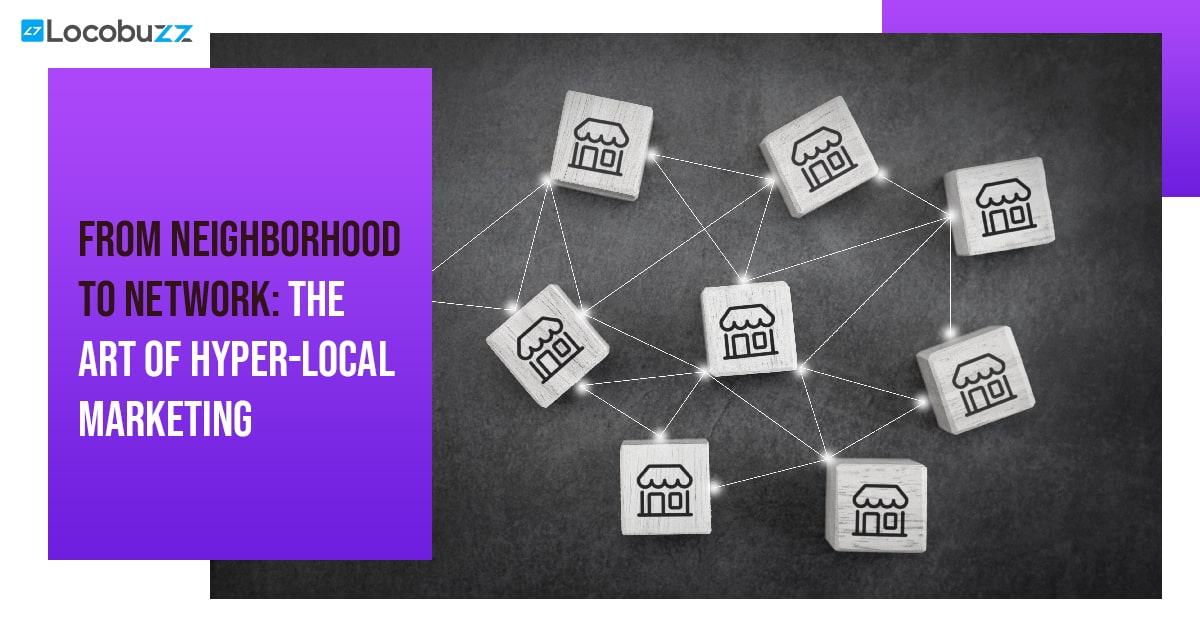Informative Customer Engagement guide that helps build your Business.
Table of Contents
Understanding Customer Engagement: What is it and Why Does it Matter?
As a business owner, you may have heard the term “customer engagement” thrown around a lot, but what exactly does it mean? Customer engagement refers to the interactions and relationships that customers have with a brand. It’s about creating a positive experience for customers that fosters loyalty and long-term relationships. Let’s discover more about Customer Engagement and how to achieve excellence with Locobuzz #CXSuite
Why is customer engagement important?
Overcoming Common Challenges in Customer Engagement
Lack of Personalization
Ineffective Communication
Effective communication is important, but it’s not always easy to achieve. Miscommunication, lack of communication, or poor communication can all be detrimental to its efforts.
Use an omnichannel communication strategy that includes email, social media, chat, and phone to ensure you’re meeting your customers where they are and providing consistent communication across all channels.
Use an omnichannel communication strategy that includes email, social media, chat, and phone to ensure you’re meeting your customers where they are and providing consistent communication across all channels.
Negative Customer Feedback
Lack of Resources
Inconsistent Customer Experience
Advantages of engaging with your customers
Increased customer satisfaction – Engaged customers are more satisfied with their overall experience with your brand. By providing personalized and meaningful interactions, you can improve customer satisfaction and create a positive brand image.
Brand loyalty – Engaged customers are more likely to remain loyal to your brand and become brand ambassadors. By fostering a relationship with your customers, you can create a sense of trust and connection that leads to long-term loyalty.
Customer lifetime value – Engaged customers tend to spend more and make more purchases, increasing their overall lifetime value to your business.
How to measure customer engagement
Strategies for Customer Engagement
There are many ways to engage with your customers, but some of the most effective strategies include personalization, omnichannel communication, and community building. Personalization involves tailoring your messaging and content to each individual customer. Omnichannel communication allows customers to engage with your brand on multiple channels, such as social media, email, and messaging apps. Community building involves creating a space for customers to connect with each other and with your brand.
It’s important to tailor these strategies to different types of customers. For example, younger customers may prefer to engage with your brand through social media, while older customers may prefer email or phone calls.
The importance of building a customer engagement culture within your business
Personalization as a Key Component of Customer Engagement
Increased customer satisfaction
Improved conversion rates
Enhanced customer loyalty
Strategies for Personalization
To personalize their interactions with customers, businesses need to collect data on their preferences, behaviors, and interests. This data can be gathered through various means, such as website analytics, social media monitoring, and customer surveys.
Once data has been collected, businesses can segment their customers into different groups based on shared characteristics or behaviors. This allows for more targeted and personalized messaging.
There are many tools and technologies available that can help businesses to personalize their interactions with customers, such as email marketing software, website personalization tools, and chatbots.
By using customer data and segmentation, businesses can create more personalized content and messaging that is tailored to the specific needs and interests of individual customers.
Personalization goes beyond just messaging and content – businesses can also provide personalized experiences for customers, such as customized product recommendations or personalized customer service.
Personalization is a key component, allowing businesses to create more meaningful and relevant interactions with customers.
By collecting customer data, segmenting customers, and using personalization tools, businesses can provide a more personalized experience that leads to increased customer satisfaction, improved conversion rates, and enhanced customer loyalty.
Overcoming Common Challenges in Customer Engagement
Overcoming common challenges in customer engagement is crucial for businesses to create long-term relationships with their customers.While it is essential, it can also be a challenging task, especially in today’s fast-paced digital world. Here are some common challenges businesses face in customer engagement and how to overcome them:
Lack of Personalization: Personalization is the key to building customer engagement, but it can be a challenge for businesses, especially when they have a large customer base. To overcome this challenge, businesses can leverage customer data to personalize their communication with customers, recommend products and services based on their preferences, and personalize their overall customer experience.
Communication Overload: Bombarding customers with too many messages can lead to disengagement. Businesses need to be strategic in their communication and use the right channel at the right time to engage with customers.
Negative Customer Feedback: Negative feedback can be daunting, but it is an opportunity for businesses to improve their customer engagement. It is crucial to respond to negative feedback promptly and address the customer’s concerns to show that the business values their opinion and is committed to providing a great customer experience.
Lack of Resources: Small businesses may find it challenging to engage with customers due to a lack of resources. However, there are cost-effective solutions such as social media and email marketing that can help small businesses engage with their customers effectively.
Difficulty in Measuring Customer Engagement: Measuring customer engagement can be challenging, but it is essential to understand how well the business is engaging with its customers. The use of analytics tools and surveys can help businesses track engagement and gather valuable insights on customer behavior and preferences.
By overcoming these common challenges, businesses can create a customer engagement strategy that fosters long-term relationships with their customers, leading to increased customer loyalty and revenue.Using Gamification to Boost Customer Engagement
Understanding Gamification
Gamification is a process of incorporating game mechanics, such as point systems and leaderboards, into non-game environments to motivate and engage customers.
By making a product or service more fun and interactive, businesses can increase customer engagement and loyalty. Here are some details on the use of gamification
The Benefits of Gamification
Types of Gamification
Best Practices for Gamification
Successful Examples
The Future of Gamification
As technology continues to evolve, the future of gamification in customer engagement is expected to be even more exciting. For example, virtual and augmented reality could provide new ways for businesses to engage with customers, while the use of artificial intelligence and machine learning could allow for even more personalized and relevant experiences.
Gamification has proven to be an effective strategy for businesses to engage with their customers. By providing a fun and interactive experience, businesses can build stronger relationships with their customers and create a sense of loyalty that can last for years to come.
The Future of Customer Engagement
The future of customer engagement is an exciting topic that’s generating a lot of interest in the business world.
According to a study by Salesforce, 80% of customers say that the experience a company provides is just as important as its products and services. This means that companies need to focus on creating a seamless, personalized, and engaging customer experience to stay competitive.
One of the biggest trends in the future of it is the use of artificial intelligence (AI) and machine learning. According to a report by Grand View Research, the global AI market is expected to reach $390.9 billion by 2025. This growth is fueled by the increasing demand for automation and the need to improve the customer experience.
Another trend that is gaining momentum is the use of chatbots and virtual assistants. Gartner predicts that by 2022, 70% of customer interactions will involve emerging technologies such as chatbots. Chatbots provide customers with quick and personalized responses to their queries and concerns, while virtual assistants can help with more complex tasks, such as making a purchase or scheduling an appointment.
Personalization is also set to become a key factor in customer engagement. Customers are more likely to do business with a company that offers a personalized experience. This means that businesses need to tailor their marketing strategies to individual customers to build stronger relationships.
Businesses will need to focus on building an omnichannel customer engagement strategy to stay relevant in the future.
Businesses need to be present on multiple channels, such as social media, email, chat, and phone, and provide a consistent and seamless experience across all of them.
The future of customer engagement is all about personalization, automation, and a seamless omnichannel experience. Businesses that can master these trends are likely to succeed in building stronger relationships with their customers and stay ahead of the competition.
How Locobuzz can help your business to improve your customer engagement
Social listening and monitoring tools – Locobuzz’s tools allow you to stay on top of customer feedback and conversations across various social media platforms. This enables you to respond to customer queries and concerns in a timely and effective manner.
Customer sentiment analysis – With Locobuzz’s customer sentiment analysis, you can understand how customers feel about your brand and identify their pain points. This information can be used to improve customer experience and build stronger relationships.
AI-powered chatbot and virtual assistant solutions – Locobuzz’s chatbot and virtual assistant solutions can provide customers with quick and personalized responses to their queries and concerns, improving customer satisfaction and engagement.
Customer feedback and survey tools – Locobuzz’s tools allow you to gather insights on customer satisfaction and identify areas for improvement. This enables you to make data-driven decisions and improve the overall customer experience.
By providing personalized and engaging experiences to customers, businesses can increase customer satisfaction, build brand loyalty, and boost customer lifetime value.
However, achieving effective customer engagement is not always easy, and businesses need to overcome various challenges to succeed in this area. From identifying the right strategies to measuring the right metrics, businesses must be willing to invest time, resources, and effort in building a culture of customer-centricity that prioritizes customer engagement.
Fortunately, there are various tools and technologies available today that can help businesses improve their efforts.
From social listening and sentiment analysis to chatbots and personalized messaging, businesses can leverage these solutions to enhance their customer engagement strategies and stay ahead of the competition.
By embracing and making it a core part of their business strategy, businesses can create meaningful and lasting relationships with their customers and drive sustainable growth and profitability.
Customer engagement is not just a buzzword but a critical business imperative that can determine the long-term success of any organization
FAQ’s
Customer engagement is crucial for building brand loyalty and increasing customer lifetime value. It also helps businesses understand their customers better and identify areas for improvement. Engaged customers are more likely to make repeat purchases, refer others to the business, and provide valuable feedback and insights.
There are several metrics that businesses can use to measure customer engagement, including customer satisfaction scores, Net Promoter Score (NPS), customer lifetime value, and customer retention rates. They can also track engagement through social media metrics, website analytics, and customer feedback.
Some effective strategies for improving customer engagement include personalization, omnichannel communication, community building, providing excellent customer service, and offering rewards and incentives.
Technology can provide businesses with powerful tools for improving customer engagement, such as social media monitoring and analytics, chatbots and virtual assistants, customer feedback and survey tools, and personalized content and offers. These tools can help businesses understand and connect with their customers on a deeper level and provide more personalized and convenient experiences.

















